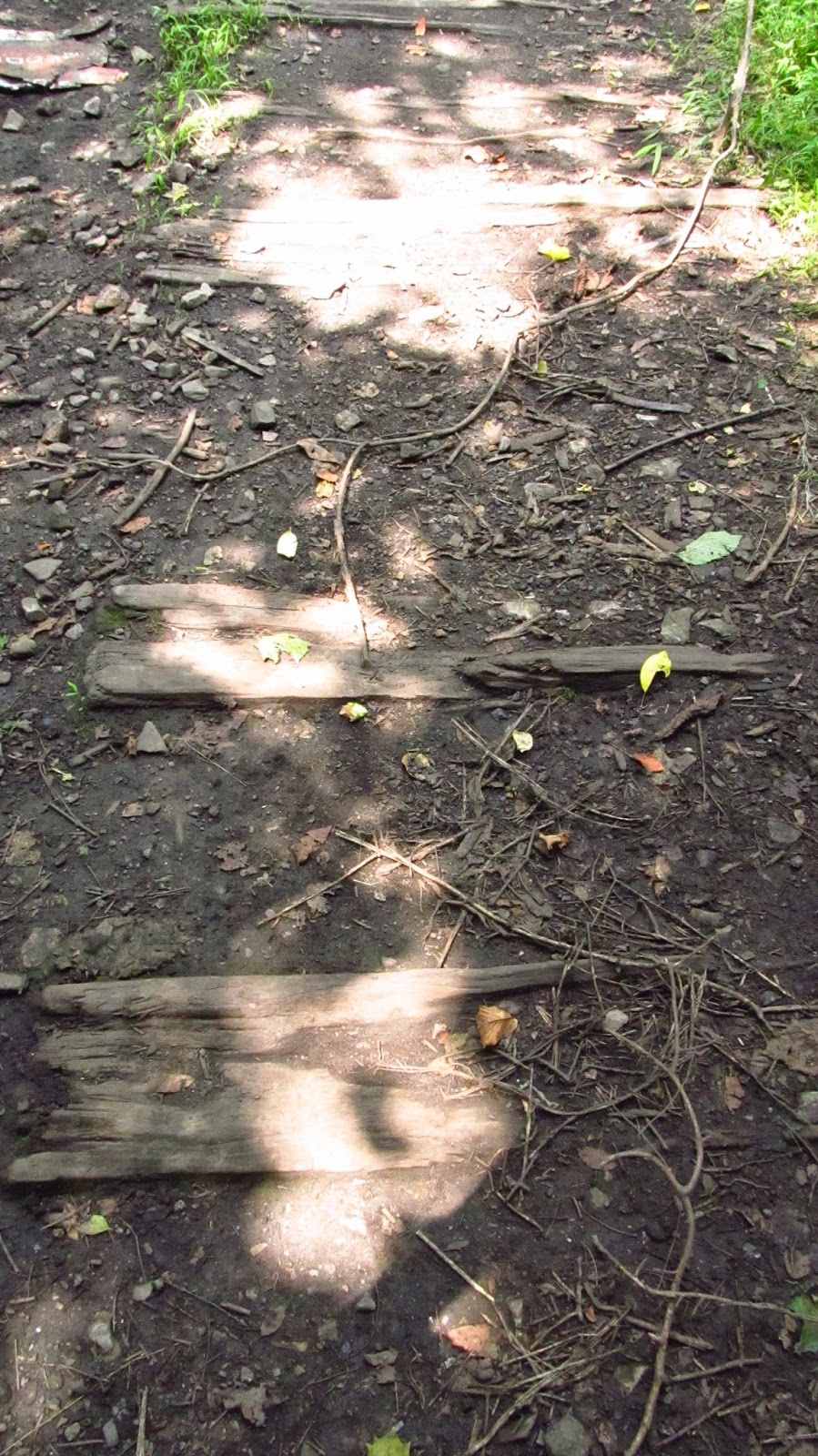The Mount Hope coke works were constructed by Isaac Taylor and Company of Uniontown around 1898 and by 1900 contained 80 beehive ovens. In 1908 the Taylor Company was reorganized as the Mount Hope Coke Company. This company operated it until the end of 1913. Over the course of Mount Hope's ownership the beehives were phased out and replaced with rectangular ovens. By the time the Snowden Coke Company of Pittsburgh took over, the plant most likely consisted exclusively of rectangular ovens. In the January 1, 1914 edition of The Coal and Coke Operator and Fuel Magazine the plant is said to contain 150 rectangular ovens.
In the 1920 Coal Catalog trade journal, the plant is listed as having 300 rectangular ovens with no mention of beehives. All that remains today are two blocks of rectangular ovens. The northern block is almost completely buried. Only the top stones of the ovens are visible in some sections. On the southern block the front of the ovens are almost entirely intact, while the backs are almost entirely buried. It looks like it was done intentionally. Maybe the area was filled in, the slate dump is gone and the area appears to be somewhat reclaimed. I don't know. This site also contains two bridges from the Redstone Branch of the Pennsylvania Railroad and a very clear rail bed.
Another interesting thing about this site: In 1920 the mine had the largest car dump in the world. The bin was over 300 feet long and the rotary dump could empty 28 coal cars in 8 seconds. Nothing remains of this massive structure other than some old concrete pillars.
 |
| These images are from the May 27, 1920 issue of Coal Age. |
 | |
| This thing had to be huge. |
 |
| The fronts of the ovens are in really good condition. |
 |
| The back of all these intact ovens are completely buried. |
 |
| The inside of these ovens are in great condition. |
 |
| So much of the mortar remains between the brick. |
 |
| At this point the ovens start crumbling and there's a good distance until they're intact again. |
 |
| The fronts of these ovens are incredibly intact but it looks like the inside collapsed. |
 |
| This is on top of the southern block. |
 |
| The back side of the block is almost completely buried. |
 |
| A lone piece of rail. |
 |
| Almost gone. |
 |
| This is an overturned concrete pillar. |
 |
| It was hard to photograph due to everything being overgrown but this is the end of the block. |
 |
| It seems to be completely intact. |
 |
| This could be the area of the massive car dump. |
 | |
| Redstone Creek. After all the industry this creek has seen, it looks like it has recovered very well. The water is clear and is supporting freshwater clams. There were shells laying on the stone. |
 |
| This is the northern railroad bridge. |
 |
| This was taken on top of the bridge. The railroad ties are still visible. |
 |
| This was a two track railway. Further down the line was a huge rail yard. |
 |
| Redstone Creek from on top of the bridge. |
 |
| A remaining piece of railing on the bridge. I've seen similar railings with PRR stamped on the base. I wasn't climbing out here to see if this had it. |
 |
| More railroad ties heading back to the coke ovens. |
 |
| The ties show this was a two track line through here. |
 |
| The main branch is to the left. The siding going to the ovens is on the right. |
 |
| Some of the concrete pillars from the tipple/car dump. |
 |
| This is all that remains of the north block of ovens. |
 |
| The top of the arch from the oven doors are barely visible above ground. I'm still curious about how exactly these got buried. |
 | |
| This is the southern railroad bridge. The abutments are part of peoples yards. The railing is very intact on this one. |
On the way back I decided to avoid the toll roads and just look around. I ended up at the Smock Historical Society's museum. It is only open on Saturdays from 10-4 so I was in luck. The ladies from the historical society are very nice. Stop in and see em! The museum is located in the former Union Supply Company building right in Smock. It is laid out very well and contains many different rooms and artifacts.
 |
| A nice display of coke making and mining tools. |
 |
| This is only a couple of the rooms. There are many other rooms with full displays. |


















